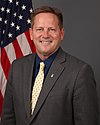Speed
Shorter timelines for deliverable space capabilities is the core of the Space RCO. In order to accomplish this, the office is allowed four significant departures in methodology from traditional Department of Defense procedure to accelerate the process of space acquisitions: It has a short and narrow chain of command; early and consistent end user involvement; small, cohesively integrated and empowered program teams; and a cadre of preassembled support across human resources, contracting, finance, IT, and security. The office explained on its Facebook page, "speed of warfighting relevance isn't just a tagline, its the reason we exist." [5] As a result, Space RCO projects have maintained an average 50% shorter timeframe from request for proposal to funding award than traditional contracting methods within the Department of Defense. [5] The office has issued more than 40 contracts in the two years since it has begun issuing. [5]
Outreach
The Space RCO conducts outreach to small and midsize businesses to broaden its visibility and enhance its network of potential partners to harness commercial solutions to accelerate research and development periods. [5] It participated in the creation of SpaceWERX, the Space Force offshoot of the Air Force's AFWERX start-up accelerator built on the financing model of Air Force Special Operations Command which can provide immediate on the spot cash payments to eligible projects from start-ups who pitch their ideas at pitch days and develop them in idea incubators. [6] It also allows initial rounds of funding to be used to generate credibility for startups to find other commercial backing to grow and build their ideas, and gives the government a route to procure resulting technology in the future. The programs have also established multiple permanent incubator facilities at the University of Nevada, Las Vegas, and in Austin, Texas, and Washington, D.C. [5]
The office has partnered with the Los Alamos National Laboratory to advance the Lab Embedded Entrepreneur Program (LEEP), which provides innovators up to $400K in funding, access to the lab's expertise, and training to rapidly advance technology, collaborating with the lab on Space Systems thrust. [5]




